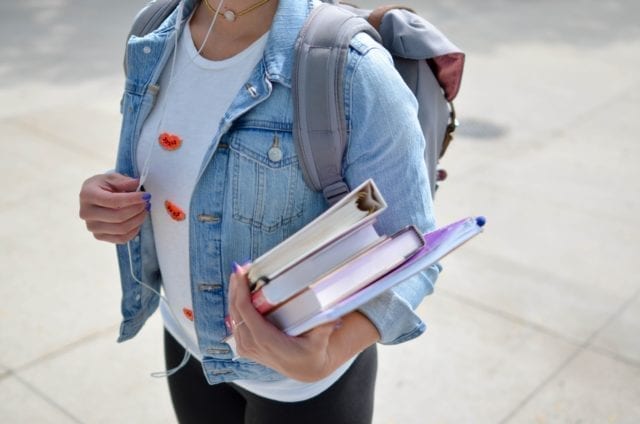
Mathematics & Mental Health: How Are Our Children Coping with Returning to School in the Age of Coronavirus?
Sanitizer, medical masks, and…colored pencils? As the summer heat starts to wind down and schools begin to open up and air out the classrooms after an extended break from in-person lessons, parents and students alike are beginning to confront the topic of returning to the classroom after what has been a very strange, to say the least, academic year that ended this past Spring.
Even in a typical year, going back to school after the summer break can bring with it a mix of emotions for students: the joy of seeing their friends, the anxiety of whether they will like their teachers or classmates, a bit of sadness that they can no longer sleep in until noon every day… But this isn’t a typical year, and this won’t be a typical back to school.
On top of the usual emotional rollercoaster that comes every fall semester, this year, students are having to deal with the possibilities of becoming infected with COVID-19, including the fears of bringing the disease back home to their parents, siblings, and even grandparents.
How are students supposed to handle the complex emotions brought on by returning to school in the midst of a global pandemic, and what are schools doing to help them prepare?
Our Children Are Returning to School in A Very Uncertain Time

After nearly six months of online learning—and in some cases, even more—students all around the world are preparing to head back to the classroom to have in-person lessons with their teachers and classmates.
In many instances, governments and school administrators still haven’t put in place plans for minimizing infections or for dealing with outbreaks when they inevitably do occur.
Teachers, many of whom have preexisting health conditions or who are in an age group that puts them at higher risk for Coronavirus, are concerned about returning to the classroom, but also understand the importance of in-person classes on the learning outcomes of their students, especially the youngest and most vulnerable.
Parents—who have been forced to work from home and take on dual duties of office worker and ad hoc math, science, and literature tutor, or who have been thrust onto the frontlines of the coronavirus pandemic, either as healthcare professionals or essential workers, who now have had to worry about not only putting in their time at work, but also how to care for their children when sending them to school was no longer an option—must now grapple with the impossible decision of whether to send their children back to school and return to some semblance of ‘normal,’ though with the ever-present specter of Coronavirus infection hanging over their heads, or keep their children safe at home and try to keep their heads above water as they navigate an increasingly stressful work-life balance.
Throughout all of this, students are looking on with confusion and uncertainty. They see parents, teachers, administrators, medical professionals, and even politicians discussing plans to open school or continue with distance-learning measure, or both, or neither…
How are our children, the future of the world, handling the prospect of returning to the classroom—whether on campus or online?
Student Mental Health Triple Threat: Quarantine, COVID, & Back to School
For students of all ages, this has been an exceptionally challenging year. The global spread of the novel Coronavirus, which causes COVID-19, and the ensuing quarantines which shut down much of the economic and social activities in countries around the world, has presented unprecedented challenges for nearly everyone.
Still, it could be argued that it is the youth who will be most affected by this pandemic. The youth who are seeing their sports seasons, proms, and graduations moved online; The students who are now, with limited attention, forced to attend school from home; The students who are now seeing what very well may be their primary source of healthy meals, psychological support, and a sense of community and belonging disappear almost overnight.
These students who have had to deal with the complete upheaval brought about by the virus are still reeling from the loss of stability so many of us took for granted, complained about, and even mocked in movies and television, yet which we relied on for so much of our success and understanding of who we are, are now being forced to confront returning to those same classrooms, starting a new school year knowing full well that the danger is far from over.
Now, as these students—still carrying the emotional weight of a year defined by uncertainty and fear—return to the classroom, they are being asked to act as Guinea pigs on the front lines of the pandemic, while at the same time being unsure whether the education they are receiving will be as effective as what came before.
This return to school is going to be difficult for even the youngest backpack-toting pupils, but for students old enough to understand the full magnitude of the pandemic, dealing with the ‘normal’ emotional turmoil which often accompanies the first days and weeks of class may simply be too much to handle.
How Can Parents & Teachers Support Mental Health When They Are Suffering, Too?
But the students aren’t the only ones affected by this transition back to the classroom, which has no equivalent in contemporary history.
We often hear the African proverb which posits that ‘it takes a village to raise a child,’ but what happens when the parents, teachers, and village elders we have always looked to for teaching our children how to navigate the complex relationships and emotions they deal with in the classroom and beyond are feeling just as lost and confused as the children they are meant to be raising?
Parents, who undoubtedly want what is best for their children and their children’s future, are confronted with impossible choices where what is best for their academic and professional future may also put them at risk of becoming infected with a deadly disease, calling their very future into question.
They are, at the same time, dealing with the emotional consequences of working from home or working a job where they are forced to venture out into the world every day into communities where the virus is still far from being under control.
The issue is even more acute for many teachers, especially those who work with the youngest cohort of bright-eyed students. For those who have dedicated their lives to a vocation who often value the hugs and thank-you cards they receive at the end of the year more so than the checks they receive at the end of each month, the thought of returning to the classroom brings with it its own set of emotional challenges.
Parents and teachers, as they always do, will try their best to give these students the support they need—a shoulder to cry on, a helping hand to pull them up, and a stern but loving push to get them to step out of their comfort zones and reach their full potential—but without additional resources, it simply may not be enough.
Schools Are Investing More in Mental Health, but Is It Enough?

School districts, universities, and local governments are already voicing concern about the mental health needs of students returning to campuses this fall. Regional and national governments around the world are providing frameworks, educational technology, and guidelines for returning safely to the classroom, some are even earmarking additional funds for students’ mental health for the coming academic year and beyond, but even with the increased focus on students’ wellbeing, schools, which have never truly had the resources to provide the full support their students need, are beginning to question how to meet the increased demands of returning to reading, writing, and arithmetic in the shadow of Coronavirus.
In some places, governments are launching programs aimed toward providing additional mental health training for teachers and educators—turning thousands of history, science, and art instructors into an army of counselors for their students. But can we really expect to rely on teachers, who were already pushed past their limits before the coronavirus upheaval, to bear the brunt of the responsibility for ensuring our children are capable of managing the complex emotions of returning to the classroom while at the same time ensuring they are capable of using the Pythagorean theorem correctly?
The issue isn’t merely that students are feeling anxious about starting the school year and they need a comforting word from a trusted adult. We aren’t just dealing with preteens who are feeling down because they think they aren’t going to be able to keep up their academic profile and may not get into a good university.
What is so problematic about the situation in which we now find ourselves is that we are facing all of these same issues we have struggled with for so long while simultaneously having to deal with the complete disintegration of the social structures upon which these children have typically relied. Children and adolescents, who often benefit significantly from the structure and predictability of the traditional school setting, are having their routines and interactions with their peers turned utterly upside down.
The real issue is that we still don’t understand the full extent of the mental-health damage that the Coronavirus outbreak has had on our children or how returning to school may exacerbate these and other mental health issues. Even though teachers, parents, politicians, and mental health professionals are doing the best they can with the resources at their disposal, the question remains: will it be enough?
Conclusion
While many talk about how children are incredibly resilient and capable of bouncing back from hardship, the truth is that even when they do bounce back, they often carry with them emotional scars that can affect them well into adulthood.
There may be no easy answers for how to open up our societies, economies, and schools after one of the worst disease outbreaks in living memory, but what is certain is that if we aren’t able to find a way to support the students, as well as the parents and teachers, as the school year kicks into full swing, we may be at risk of trading a medical crisis for a mental health one.












